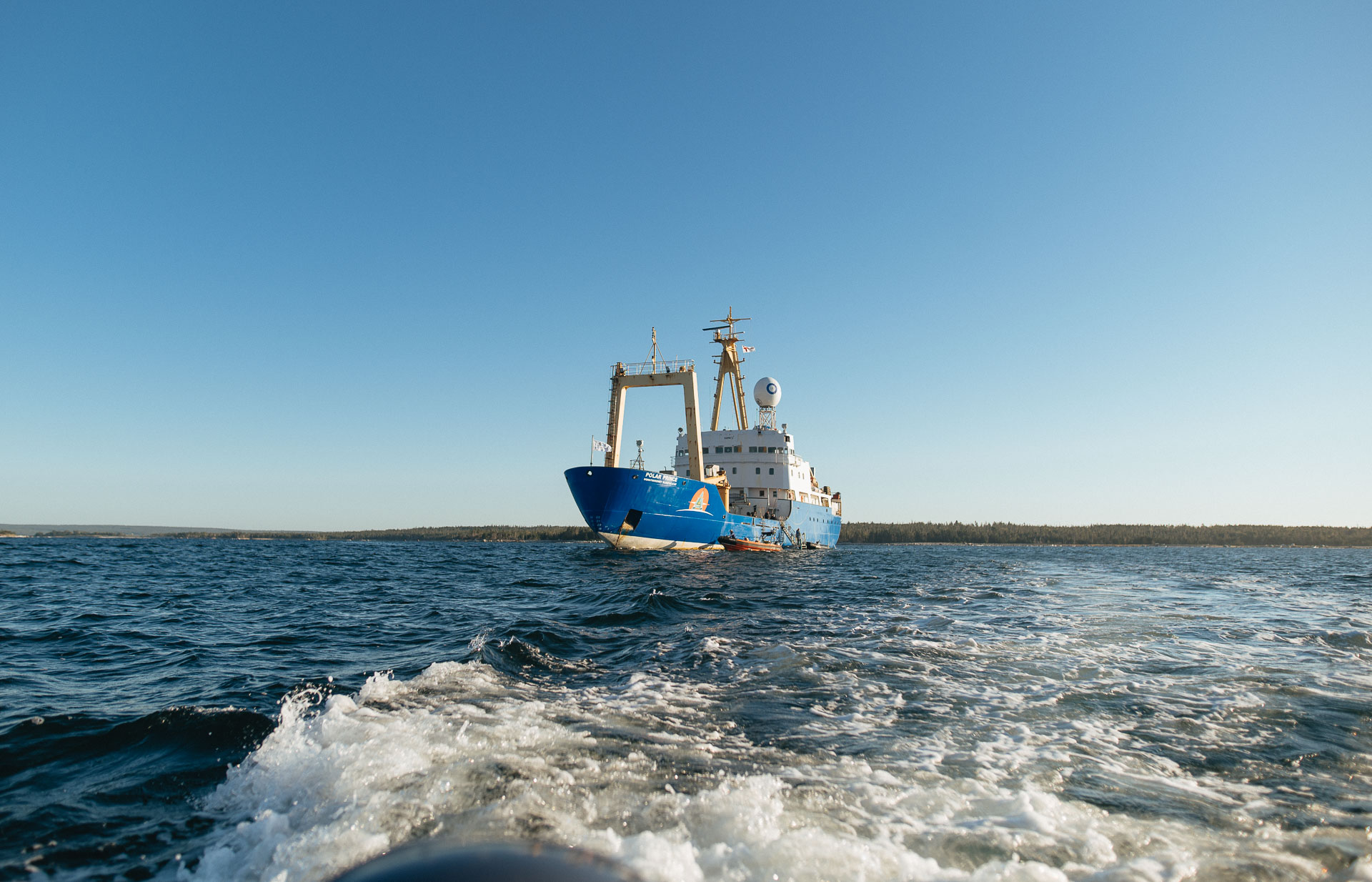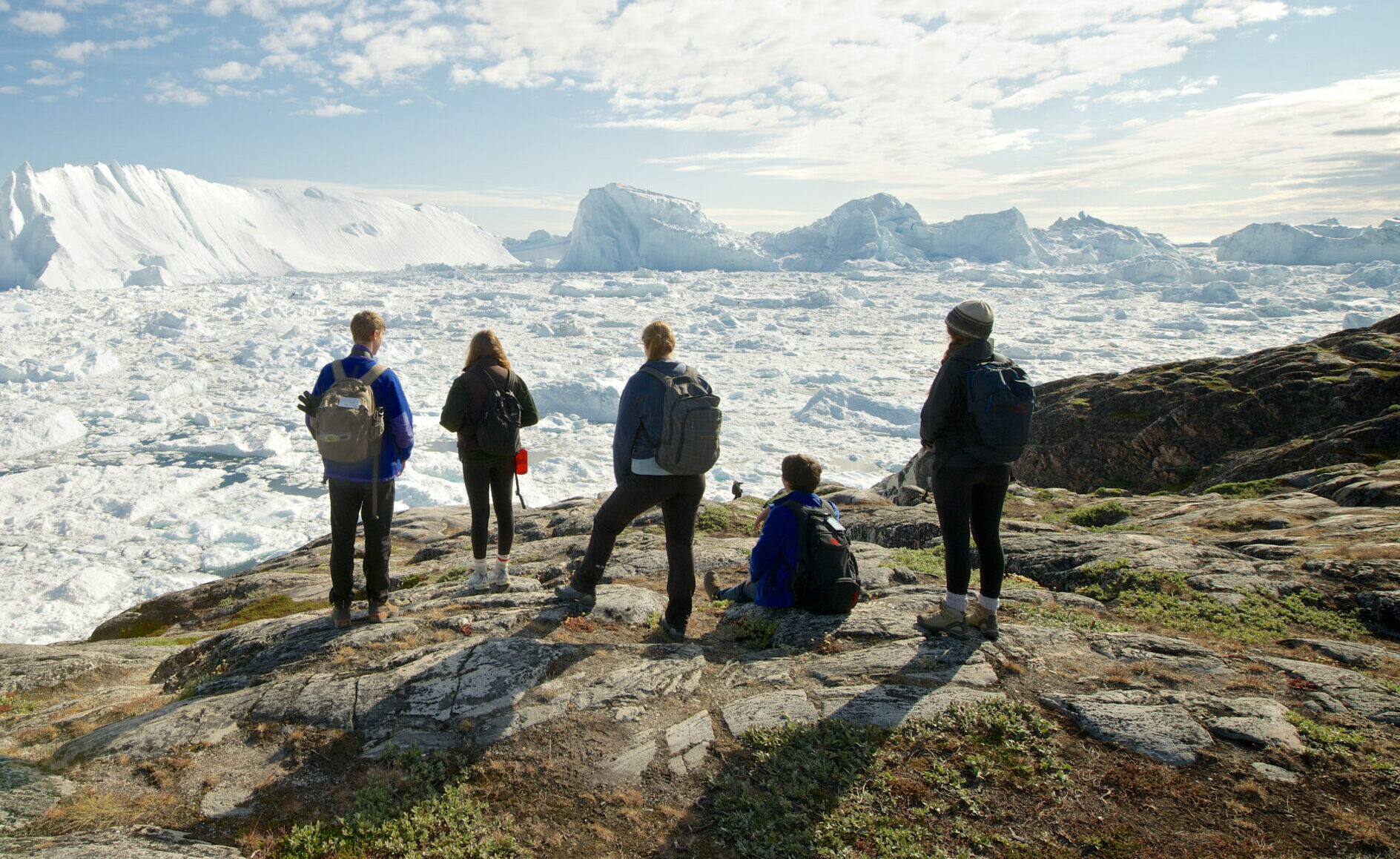Kalaallit Nunaat to Nunavut Expedition: Youth Reflective Blog 1
This blog is a reflective account written by youth participants of the 2024 Kalaallit Nunaat to Nunavut Expedition. Through their collective voices, they share experiences, challenges, and the meaningful connections they made throughout the journey.
Our expedition had a turbulent start, as months of planning suddenly went North! We came together as a community in an unexpected way on the first day as we were informed there was a complete change of plans for our expedition, which involved changing vessels, flights, itineraries, and more. Though the quick pivot was initially a shock to all of us, we were grateful to the SOI staff for ensuring we still had an exciting expedition ahead. We quickly embraced their motto that “flexibility is key!”

Before leaving for our flight, we got to spend time at the Inuuqatigiit Centre for Inuit Children, Youth and Families in Ottawa, learning about Inuit mythology, culture, and games. This was a great introduction for those of us that were not Inuit, and left us feeling excited for the cultural experiences to come.
Not long after boarding the Ultramarine, our floating classroom for the coming two weeks, we landed at Sisimiut, the first of three community visits we have planned in Greenland. Most of us had never been to Greenland before, and a few had never been north of the Arctic Circle, so we were eager to learn about Greenlandic Inuit culture. On our tour of the town led by Peter, a Quark staff member from Greenland, we learned about the ropes used to practice qajaq maneuvers, and the culture around dog sledding and raising dogs. The Inuit members of our group shared interesting differences between Greenlandic Inuit culture and that of their home communities in Canada, such as different arrangements of dogs for pulling sleds.

At the same time, we noticed substantial cultural continuity and a shared movement of cultural revitalization among youth across Greenland and Canada. The sharing of these cultural similarities and differences brought us closer as a community, and is perhaps best encapsulated by the time we enjoyed together wandering the hills around Sisimiut, foraging for crowberries and connecting with each other.
In Ilulissat, we visited the Ilulissat Icefjord, an absolutely breathtaking landscape. Nothing could mentally prepare us for when we first set eyes on the expanse of icebergs collectively receding into the mist. We reflected on the fjord’s environmental significance. It is a channel between the Greenland Ice Sheet and the ocean, and climate change has meant that more icebergs flow out of the fjord faster than the Ice Sheet builds back up. The huge addition of freshwater from these icebergs not only threatens to raise sea levels but also to change the very identity of our world’s ocean. More freshwater lowers salinity and changes the density of water in the Arctic, threatening to disrupt the ocean currents upon which global human and ecological communities depend on.

In spite of these environmental threats, hearing Lynda and Siasi throat-singing beside the icefjord served as a reminder that Inuit culture has persisted despite a host of political and environmental shifts, and it is crucial for us to highlight stories of community resilience even in the face of an existential threat like climate change.

That afternoon, we went on our first Zodiac excursion and were again reminded of the sheer power of the ice surrounding us. As we neared the end of the outing, we stopped to observe a particularly large iceberg. We suddenly heard and felt a powerful crack… and before our eyes, a large fragment of the iceberg calved, producing an impressive plume of snow and large splashes as it fell and hit the water. We could see a significant swell form from the fall, and the collection of shattered pieces of ice rippling along with it. The experience was so indescribably grand and surreal. And it made us realize how insignificant and powerless we are in the face of the unpredictably awesome force of nature.
Next, as we cross the Davis Strait we’re all looking forward to immersing ourselves in the landscapes and culture of Canada’s North.





